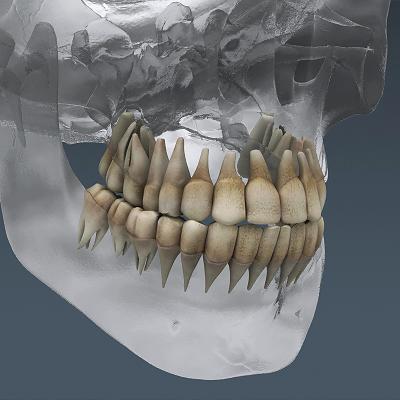
LetsFixYourFace
Boston, MA
Male, 35
I practice oral and maxillofacial surgery in a major metropolitan area in the US. Despite the fact that I was a dentist before I was a doctor (now I am both), taking out teeth is but a mere bank rolling of my true interest... Cutting into peoples faces :)
- Wisdom teeth
- Facial fractures
- Head and neck tumors
- Facial cosmetic procedures
- Fixing your jacked up bite
First a couple definitions:
Plastic surgery: Often used as a misnomer. It is actually a certified specialty within medicine whose scope is much more than just boob jobs, tummy tucks and cosmetic procedures. It should be thought of as describing a person rather than the type of surgery performed. Neurosurgeon, Radiologist, Plastic Surgeon, etc... Plastic surgeons are actually trying to combat this misnomer by now referring to themselves as plastic and reconstructive surgeons.
Cosmetic surgery: This is a surgery that is performed that has been deemed to have no physical therapeutic benefit. Cosmetic surgery is not strictly performed by plastic surgeons. Others performing this would include Oral and Maxillofacial Surgeons (like me), Dermatologists, Opthomologists, ENT (ear nose and throat, technically called otolaryngologist), etc.
Orthognathic surgery: A surgery that will correct/improve someones occlusion (bite) by surgically repositioning the mandible (lower jaw), maxilla (upper jaw). This is typically not considered a cosmetic procedure.
Now on to Bristol...
You don't ALWAYS need braces before having orthognathic surgery. Common examples of this would be when doing this for someone suffering with obstructive sleep apnea. The idea is that while they are sleeping, their tongue slips into their airway and causes them to obstruct. By advancing their mandible and maxilla forward, you bring the tongue musculature with it and reduce the abiliity to obstruct. The point here is that you are not changing the bite and do not necessarily need braces before hand.
The only way to know for sure is to look at profile before and after pictures (which I have trouble finding for her) and also looking at her dental models (plaster molds). When I look at the before and after frontal photos a couple things seem obvious...
There is an impressive amount of facial and neck fat that is missing. My guess is that this is from a combination of dieting, excercise and PROBABLY a little bit of submental liposuction. Her cheekbones look pretty similar as far as I can tell but what really stands out is her chin. It looks like she either had a genioplasty or a chin implant but again it is hard to tell in the context of all the fat loss.
To answer your question... In my opinion it looks as if she had cosmetic surgery. It is possible that no implants were put in as she simply could have just had liposuction and the placement of her existing chin altered. It doesn't look like her bite has changed much or the position of her facial skeleton has changed but again it is hard to tell without seeing actual preoperative data. She certainly has NOT had reconstructive surgery as that would imply something was missing that was reconstructed. Nevertheless... she looks amazing and I would go to see her surgeon any day :)
No. I decided in dental school that I wanted to do oral surgery. You must complete a residency in oral and maxillofacial surgery in order to be able to do that.
This question is too vague to answer. Not all surgeries are the same. Some surgeries are very long and cost more. Some surgeries are short... Some are technically very difficult and require multiple surgeons and cost more. Some surgeries are done with just regional anesthesia rather than general and may cost less. Some are elective and some are done on an emergency basis. All of these factors can lead to higher or lower costs. In general the biggest factor is time under general anesthesia.
As far as what the surgeon takes home it is usually a smaller slice of the pie. The anesthesiologist and the hospital take bigger chunks than you would think. In oral and maxillofacial surgery, most of the money is made in the office doing procedures under local anesthesia or IV sedation where there is no anesthesiologist or hospital involved.
Another thing to consider is trauma... these cases generally pay very little. This is because often the patient has no insurance or limited funds and the cost is absorbed by the state or the hospital, thus the reimbursement is not adequate.
Do you have a specific surgery in mind?
Thats insurance in general for you... They don't make money by paying for other people's surgeries. Very often they need to have it made very clear that by actually paying for a surgery, they will be saving money in the long run. In the case of the open bite, it is clear that there can lead to problems with the TMJ, chronic pain, and nutritional and quality of life issues given the difficulty chewing so you have to be persistent.
Veterinarian
 Who are the bigger hypochondriacs: dog owners or cat owners?
Who are the bigger hypochondriacs: dog owners or cat owners?
Programmer
 Why are so many developers such bad communicators?
Why are so many developers such bad communicators?
Professor
 How do you prevent cheating and plagiarism these days?
How do you prevent cheating and plagiarism these days?
The reported incidence is around 0.1-0.2%. It is very rare and I have never seen it or met anyone who has. As with all calamities of surgery, it is usually a multifactorial process. Most of the cases in which it happens, the patient has a neuromuscular blocking agent on board (they are paralyzed) and can't respond to surgical stimulus, despite being able to hear, feel, etc. Most surgeons don't require a paralytic during surgery, but virtually EVERY patient needs a period of paralysis during induction of surgery. This is because during intubation, you can undergo vasospasm if your vocal cords are irritated while the breathing tube is inserted. Having a short acting paralytic going at this time prevents this. Some patients metabolize drugs slower than others and the drug could be lingering around for longer leading to the inability to demonstrate awareness. Thats not necessarily the anesthesiologists fault. However there are instances in which the anesthesiologist is just too inexperienced and their error is involved as well.
It is important to note that most people who have described having an awareness episode reported not feeling pain.
Sounds like you had a BSSO - Bilateral sagittal split osteotomy. This surgery is done when you have a severe underbite that can't be corrected with braces alone. The surgery allows for repositioning of your lower jaw in a more forward position to correct the underbite. Occasionally it is done when you have a severe overbite (reposition the lower jaw backwards) but usually in this instance the upper jaw is moved forward. I digress....
The BSSO consists of 3 bone cuts (osteotomies) on each side of the mandible. Once the soft tissue dissection is complete, a horizontal cut is made on the inner side of the mandible, just above where the inferior alveolar nerve enters your mandible. This is the nerve that supplies sensation to your teeth, gums, lip, etc. This cut only goes through half of the bone. Think of your mandible as a ham sandwhich - 2 pieces of bread and a slice of ham. The pieces of bread are the dense cortex and the ham is the less dense marrow space. The nerve runs in the marrow space (the ham). So when the first cut is made, we are only going through the inner slice of bread (cortex). A vertical cut is then made from the edge of the first horizontal cut down the ramus and it is essentially going between the two cortices. This cut is extended to the level of the first molar. Finally, the third cut is also vertical and goes through the outer cortex only. Think of the 2nd cut as connecting the 1st and 3rd cuts. Google "bilateral sagittal split osteotomy" for a nice visual conceptualization of this. The reason the cuts are made this way is because we are trying to keep the nerve associated with that inner section of bone. With these cuts, believe it or not the bones are not very movable from each other. They are still connected by the slice of ham as well as by the bottom surface of the mandible. The pieces are actually separated with a series of osteotomes (chisels) and a mallet. The theory is that with our cuts we have introduced a manner in which the fracture will happen in a controlled manner and the nerve will be unharmed. This is done on both sides and it allows for free movement of the tooth bearing section of the mandible. We reposition that section to where we want it and then screw it back to the section of the mandible that has the joint attached.
Things can go wrong at a few different points...
First with the intitial cuts, if the nerve is not visualized entering the mandible, the cut can be made too low and the nerve can be severed. Second, with the controlled fracture sometimes the mandible just splits in a way we don't want it to and the nerve gets injured. Finally, when all the pieces are screwed back together, the nerve can be compressed between the segments. In any of these instances, if it is not noticed during surgery you will be left with permanent paresthesia of the innervating structures. If we see the nerve was severed during surgery we can repair it right there and this has good results. Nevertheless, these complications are typically a function of experience.
EVERYONE who has this surgery will be numb for a period of time after the procedure. This is because manipulation of any nerve will cause transient numbness. However, so long as everything went well the feeling will come back within a few months. When injuries occur, if the nerve is repaired generally a predictable population does better than others. That is age. People 25 and under generally will regain feeling. Older than that, if something happens to the nerve (incidence is ~25%), you will be numb on that side permanenetly. This is the reason mostly younger people are getting this surgery.
Im sorry to hear that you are still partially numb. Given that you have some feeling you likely had a partial nerve injury and not a complete transection. From the studies that we do have, most people demonstrate more elation with the functional and cosmetic outcome of the surgery than unhappiness with their numbness.
I haven't ever seen anyone whom I thought looked worse after orthognathic surgery (see bristol palin question for definition). Often, people getting orthognathic surgery have such severe underbites, or overbites that there is no way they can look anything but better after the surgery.
The only reason I can think that someone would look worse is if they are getting obstructive sleep apnea surgery where their mandible and maxilla are being advanced forward upwards of 14 mm. This tends to make there lips and face kind protrude out. They are often heavy set though and their extra facial tissue usually hides this.
As far as cosmetic surgery goes, I see a lot of hideous looking people on TV that have had too much. Joan Rivers comes to mind... She is so surgerized she cant even make facial expressions and it looks unnatural. But for every person like that, there are multiple people out there who have had cosmetic surgery in which you would have no idea.
-OR-
 Login with Facebook
Login with Facebook (max 20 characters - letters, numbers, and underscores only. Note that your username is private, and you have the option to choose an alias when asking questions or hosting a Q&A.)
(A valid e-mail address is required. Your e-mail will not be shared with anyone.)
(min 5 characters)
By checking this box, you acknowledge that you have read and agree to Jobstr.com’s Terms and Privacy Policy.
-OR-
 Register with Facebook
Register with Facebook(Don't worry: you'll be able to choose an alias when asking questions or hosting a Q&A.)